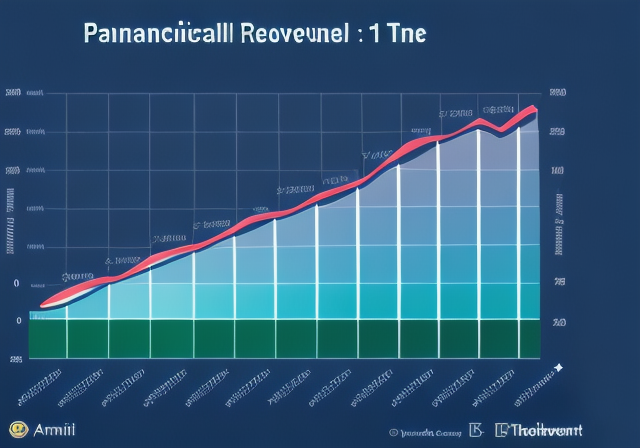Understanding Revenue
Revenue is the total amount of money a business generates from its sales or services. It is the lifeblood of any business, as it determines the company’s ability to pay expenses, invest in growth, and generate profits. Revenue is important because it provides a clear picture of a company’s financial health, growth potential, and success in the market.
Types of Revenue
Gross Revenue: Gross revenue is the total amount of money a company earns from sales or services before any deductions or expenses. It is the raw revenue number that does not take into account any costs.
Net Revenue: Net revenue is the amount of money a company earns after deducting any expenses, such as operating costs or taxes, from gross revenue. It is the actual revenue that a company earns and is a more accurate representation of a company’s financial health.
Recurring Revenue: Recurring revenue is the revenue generated from repeat customers or subscription-based services. It is a predictable revenue stream and is an essential source of revenue for many businesses.
Calculating Revenue
Calculating revenue is a straightforward process that involves multiplying the number of units sold or services performed by the price per unit or service. The formula for calculating revenue is:
Revenue = Units Sold x Price per Unit
For example, if a company sells 500 units of a product for $10 each, the revenue generated would be:
Revenue = 500 x $10
Revenue = $5,000
It is important to note that revenue alone does not indicate a company’s profitability. To determine a company’s profitability, it is necessary to subtract all expenses from revenue to calculate net income.
Understanding revenue is crucial for any business owner or entrepreneur. By keeping track of revenue and analyzing its sources, businesses can make informed decisions about their financial future and set themselves up for long-term success.

“Revenue is vanity, profit is sanity, but cash is king.”
This popular saying highlights the importance of cash flow for a business. While revenue is essential, it is not the only factor that determines a company’s success. Profitability and cash flow are equally important and should be considered alongside revenue when making business decisions.
Furthermore, businesses should aim to diversify their revenue streams to reduce their reliance on a single source of income. This can be achieved by expanding product lines, targeting new markets, or offering additional services.
Overall, understanding revenue is an essential component of any business’s financial strategy. By leveraging revenue data and analyzing its sources, businesses can make informed decisions about their future and set themselves up for long-term success.

Identifying Revenue Opportunities
Assessing your current revenue streams is the first step in identifying opportunities for growth. You need to analyze your current revenue sources, understand which ones are the most profitable, and identify areas where you can improve. This will help you to focus your efforts and resources on the areas that offer the most potential for growth.
One way to assess your current revenue streams is to analyze your financial statements, including your income statement, balance sheet, and cash flow statement. These statements will give you a clear picture of your current revenue sources, expenses, and cash flow. You can also use financial ratios such as gross profit margin, net profit margin, and return on assets to evaluate the profitability of your revenue streams.
Identifying New Revenue Opportunities
Once you have assessed your current revenue streams, you can start looking for new revenue opportunities. There are several ways to identify new revenue streams, including:
- Expanding your product or service offering
- Targeting new customer segments
- Entering new markets
- Developing new distribution channels
It’s important to consider the potential revenue and profitability of each new opportunity and weigh it against the costs and risks involved. You can use tools such as market research, customer surveys, and financial modeling to evaluate the potential of each opportunity.
Researching Your Target Market
Researching your target market is critical to identifying new revenue opportunities. You need to understand your customers’ needs, wants, and preferences, as well as their buying behavior and purchasing power. This will help you to develop products and services that meet their needs and create targeted marketing campaigns that resonate with them.
Market research can provide valuable insights into your target market, including demographic data, psychographic data, and behavioral data. You can use surveys, focus groups, and online research tools to gather this information. You can also analyze your competitors and identify gaps in the market that you can fill.

Identifying revenue opportunities requires a thorough understanding of your current revenue streams, potential new revenue sources, and your target market. By conducting a detailed analysis and research, you can identify areas for growth and develop a strategic plan to capitalize on those opportunities.

Maximizing Revenue Potential
Now that you have identified your current revenue streams and researched your target market, it’s time to focus on maximizing your revenue potential. To do this, you need to increase your customer base, optimize your pricing strategies, and utilize upselling and cross-selling techniques.
Increase Your Customer Base
One of the most effective ways to maximize revenue is to increase your customer base. This can be achieved by improving your brand visibility and marketing efforts. Invest in creating high-quality content that is optimized for search engines, social media, and email marketing. Use targeted advertising to reach your ideal customers and engage with them on social media by sharing valuable information and creating a community around your brand.
Another way to increase your customer base is to offer incentives such as discounts, loyalty programs, or referral programs. By rewarding your existing customers, you encourage them to spread the word about your brand and attract new customers.
Optimize Pricing Strategies
Optimizing your pricing strategy can also help you maximize revenue potential. Conduct market research to determine the optimal price point for your product or service, taking into account aspects such as your target market, competition, and perceived value.
You can also experiment with different pricing models, such as tiered pricing or subscription-based models, to find what works best for your business. Additionally, consider offering bundled packages to increase the perceived value of your product or service.
Upselling and Cross-Selling Techniques
Upselling and cross-selling techniques are also effective ways to maximize revenue potential. Upselling involves offering customers a higher-priced version of the product or service they are considering, while cross-selling involves offering complementary products or services.
To effectively upsell and cross-sell, you need to have a deep understanding of your customers’ needs and preferences. Use data analytics to identify patterns in customer behavior and tailor your recommendations accordingly. Additionally, make sure your sales team is trained to effectively use these techniques without coming across as pushy or aggressive.
By increasing your customer base, optimizing your pricing strategies, and utilizing upselling and cross-selling techniques, you can maximize your revenue potential and take your business to the next level.

Remember that maximizing revenue potential is an ongoing process that requires constant monitoring and adjustment. Continuously evaluate your strategies and make changes as needed to stay ahead of the competition and meet the evolving needs of your customers.
Streamlining Operational Processes
Aside from maximizing revenue potential, another way to improve your business’s financial standing is by streamlining operational processes. By doing so, you can reduce costs, automate processes, and outsource tasks to improve efficiency.
Reducing Costs to Increase Revenue
One of the most effective ways to increase revenue is by reducing costs. By identifying and eliminating inefficiencies, you can save money and allocate those resources towards other areas of your business. Start by conducting a thorough analysis of your current expenses and identify areas where you can cut back. For example, you might find that you’re overspending on office supplies or that you’re paying for software licenses that you don’t need.
Another way to reduce costs is by negotiating with your vendors. This could mean asking for a discount on bulk orders or finding a new supplier that offers better prices. By reducing your expenses, you’ll have more cash on hand to invest in other areas of your business.
Automating Processes to Save Time and Money
Automating processes is another way to improve efficiency and reduce costs. By using software and technology to handle repetitive tasks, you can save time and money while freeing up your employees to focus on more important projects. For example, you might use automation software to handle your company’s payroll or to manage your social media accounts.
Automation can also help improve accuracy and reduce errors. By removing the risk of human error, you can improve the quality of your products and services, which can lead to increased customer satisfaction and loyalty. Additionally, automation can help you scale your business by allowing you to handle more orders and customers without increasing your staff.
Outsourcing to Improve Efficiency
Outsourcing is another option for improving efficiency and reducing costs. By outsourcing certain tasks to a third-party provider, you can free up your employees to focus on more important projects while also taking advantage of specialized expertise. For example, you might outsource your IT support or your marketing campaigns to a company that specializes in those areas.
Outsourcing can also help you save money on labor costs. Depending on where you’re located, outsourcing certain tasks to a provider in a different country can be significantly cheaper than hiring local employees. However, it’s important to carefully vet any potential outsourcing partners to ensure that they meet your quality standards and that they’re a good fit for your business.
By streamlining operational processes, you can improve your business’s efficiency and financial standing. Whether you’re reducing costs, automating processes, or outsourcing tasks, there are many ways to optimize your operations and position your business for long-term success.

Using visual aids like tables and bullet points can help make your operational processes more clear and concise:
| Process | Potential Benefit |
|---|---|
| Automating payroll | Save time and reduce errors |
| Outsourcing IT support | Reduce labor costs and improve expertise |
| Negotiating with vendors | Reduce expenses and increase cash flow |
“Outsourcing can be a great way to access specialized expertise without having to hire additional staff.” – John Smith, CEO
By implementing these strategies, you can improve the efficiency and profitability of your business, helping you achieve your long-term goals and stay competitive in your industry.

Measuring Success
Streamlining operational processes is just one part of the equation when it comes to improving revenue. To truly gauge the success of your efforts, you need to track key performance indicators (KPIs) that directly impact revenue growth. These KPIs can vary depending on your business and industry, but some common ones include:
- Sales growth: This measures the increase in revenue over a specified period of time.
- Customer acquisition cost (CAC): This measures the cost of acquiring a new customer, including marketing and sales expenses.
- Conversion rate: This measures the percentage of leads that convert into paying customers.
- Customer lifetime value (CLV): This measures the total revenue a customer is expected to generate over the course of their relationship with your business.
It’s important to regularly analyze and report on these KPIs to identify trends and areas for improvement. There are many data analysis and reporting tools available, such as Google Analytics, Salesforce, and HubSpot. These tools can help you track your KPIs over time and provide insights into the effectiveness of your sales and marketing efforts.
Making Adjustments Based on Results
Tracking KPIs is only half the battle. The real value comes from using that data to make informed decisions and adjustments to your processes. For example, if you notice that your conversion rate is low, you may need to adjust your sales pitch or marketing messaging to better align with your target audience. Similarly, if your CAC is high, you may need to reevaluate your marketing channels or adjust your pricing strategy.
It’s important to approach these adjustments with a data-driven mindset. Rather than making changes based on gut feelings or assumptions, use the data to guide your decisions and test different approaches to see what works best. This can help you continuously improve your operational processes and drive revenue growth over time.

Ultimately, measuring success is an ongoing process that requires constant evaluation and adjustment. By focusing on key performance indicators, using data analysis and reporting tools, and making adjustments based on results, you can streamline your operational processes and drive revenue growth for your business.








